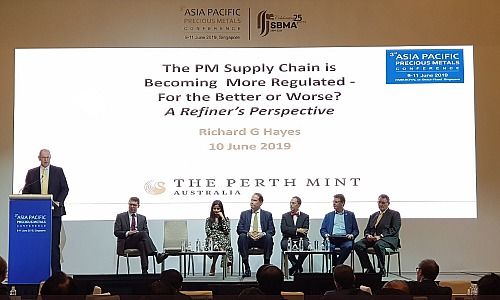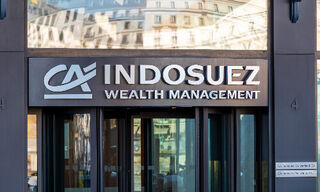Singapore Grows Regional Gold Hub Status
Despite looming headwinds caused by the ongoing U.S-China trade war and slowing global growth, the international bullion community turned up in strong numbers at the third Asia Pacific Precious Metals Conference.
Singapore's received strong support in its bid to become the region's precious metals trading hub as the Asia Pacific Precious Metals Conference, held on June 9-11 with the theme «Building a Sustainable Precious Metals Hub in ASEAN,» continued to grow in size in its third year.
The conference, organized by the Singapore Bullion Market Association (SBMA) with the support of Enterprise Singapore, received over 400 delegates, including over 100 from China and Hong Kong, and strong representation from Australia. The importance of ASEAN as a kilobar market and for Singapore as a trading hub was reflected by the positive response to the first Kilobar Pavilion, which saw a range of gold refiners displaying and marketing LBMA-accredited and non-accredited bars.
«It is the objective of SBMA to play a pivotal role in building a sustainable precious metals hub in Singapore by bringing together industry players from the bullion markets of ASEAN countries and connecting them to global markets. After all, Asia is the largest gold mining and gold consumption market,» SBMA CEO Albert Cheng said.
Hot Topics
In line with the theme of the conference, the panel «ESG Criteria: New Paradigms That Will Redefine the Precious Metals Supply Chain,» moderated by World Gold Council chief financial officer Terry Heymann, discussed the environmental, social, governance issues becoming more prevalent in the industry.
«This is a real issue. This is how the world is moving terms of what expectations are. This is particularly true in terms of investing,» Heymann said, adding that it is important for the precious metals sector to demonstrate its commitment to responsible business practices, as responsible mining and responsible sourcing are specific challenges the sector must address.
Other topics that generated lively discussions were the digitization of gold and its use in mobilizing physical holdings, developing regional connectivity between China and Southeast Asia's gold markets, and the effect the U.S.-China trade war is expected to have on the gold sector.
Gold Under Pressure
«Gold’s safe-haven status is under pressure. Dollar highs are headwinds for gold,» UBS chief gold analyst Joni Teves said. She noted, however, that gold would move to an upside scenario if there is a marked shift of U.S Federal Bank policy into easing, and if the dollar would decline substantially, two scenarios that could happen in the near future.
Bart Melek, global head of commodity strategy for TD Securities, said he expects the price of gold to move towards $1,400-$1,500/oz towards the second half of 2020 as investors continue to use it as a hedge against risk given the uncertain global outlook.
Silver Recovering?
The market for silver, on the other hand, is still suffering from a structural surplus, said Nikos Kavalis of Metals Focus, who expects the price of silver to grow slightly to $18/oz.
He pointed out that there has been a noticeable improvement in the market as a result of a recovery in global demand for bars and coins, but demand is a fraction of what it used to be, particularly because industrial demand, which accounts for more than half of silver's consumption, is still disappointing and is affected by the global economic downtown.




























